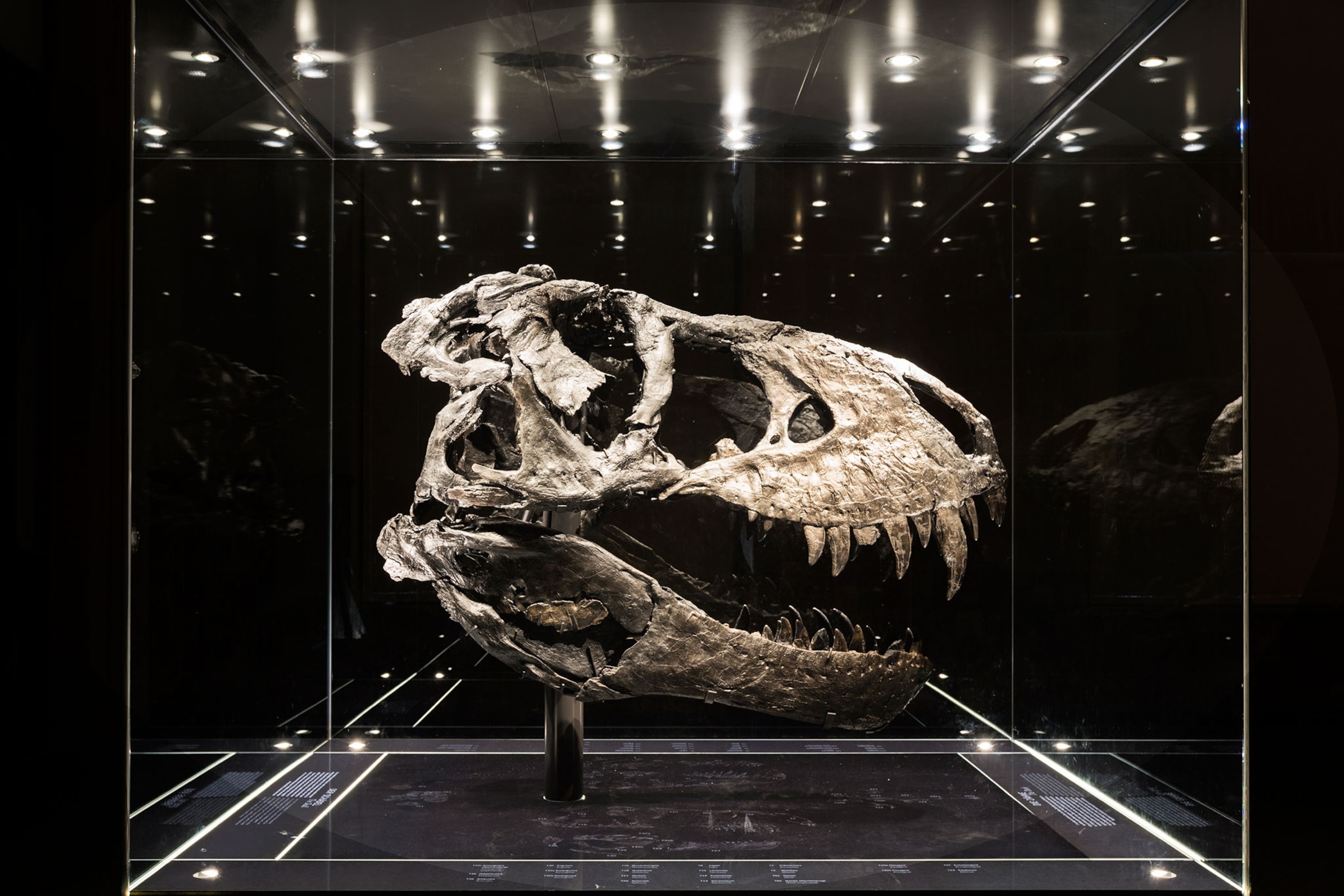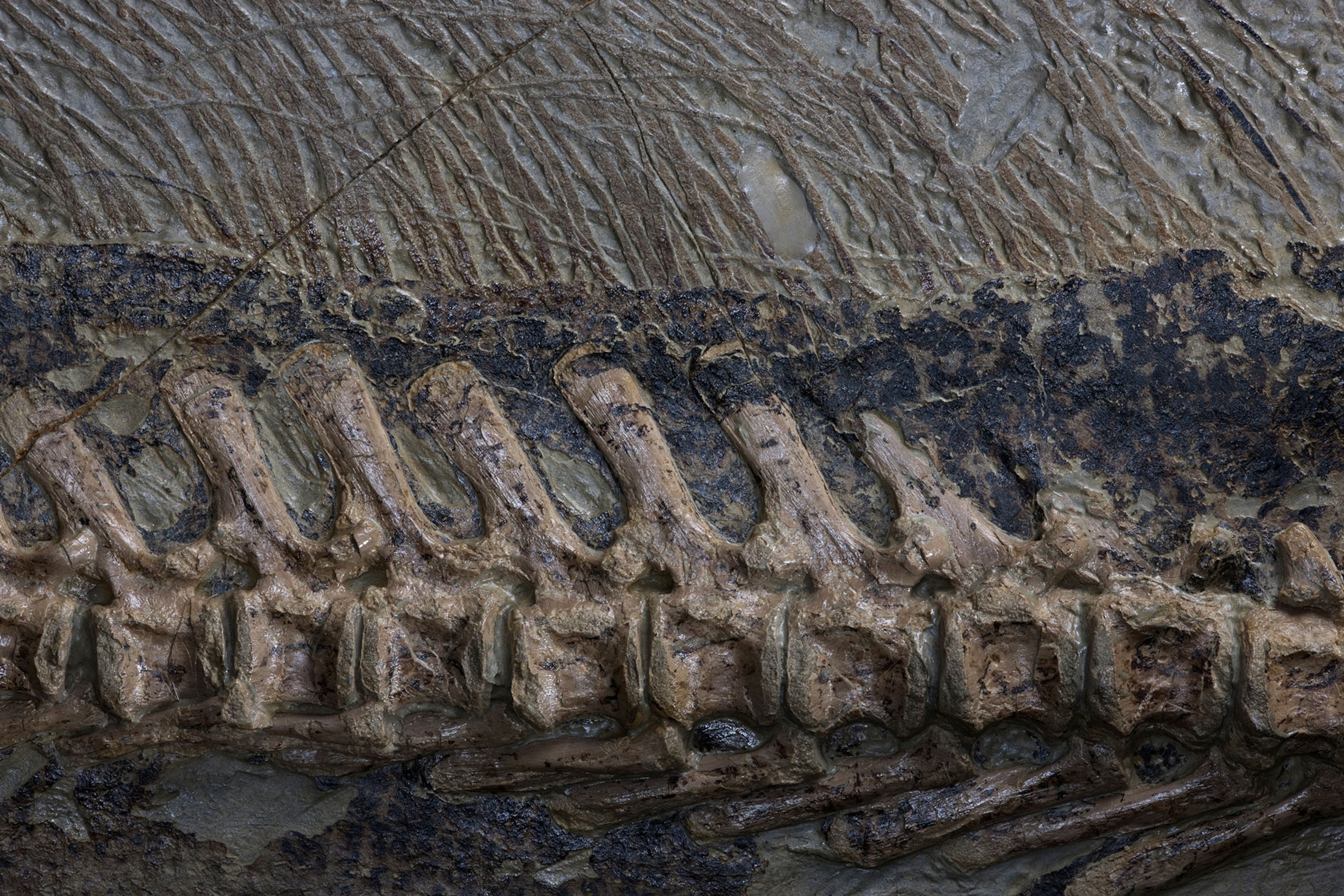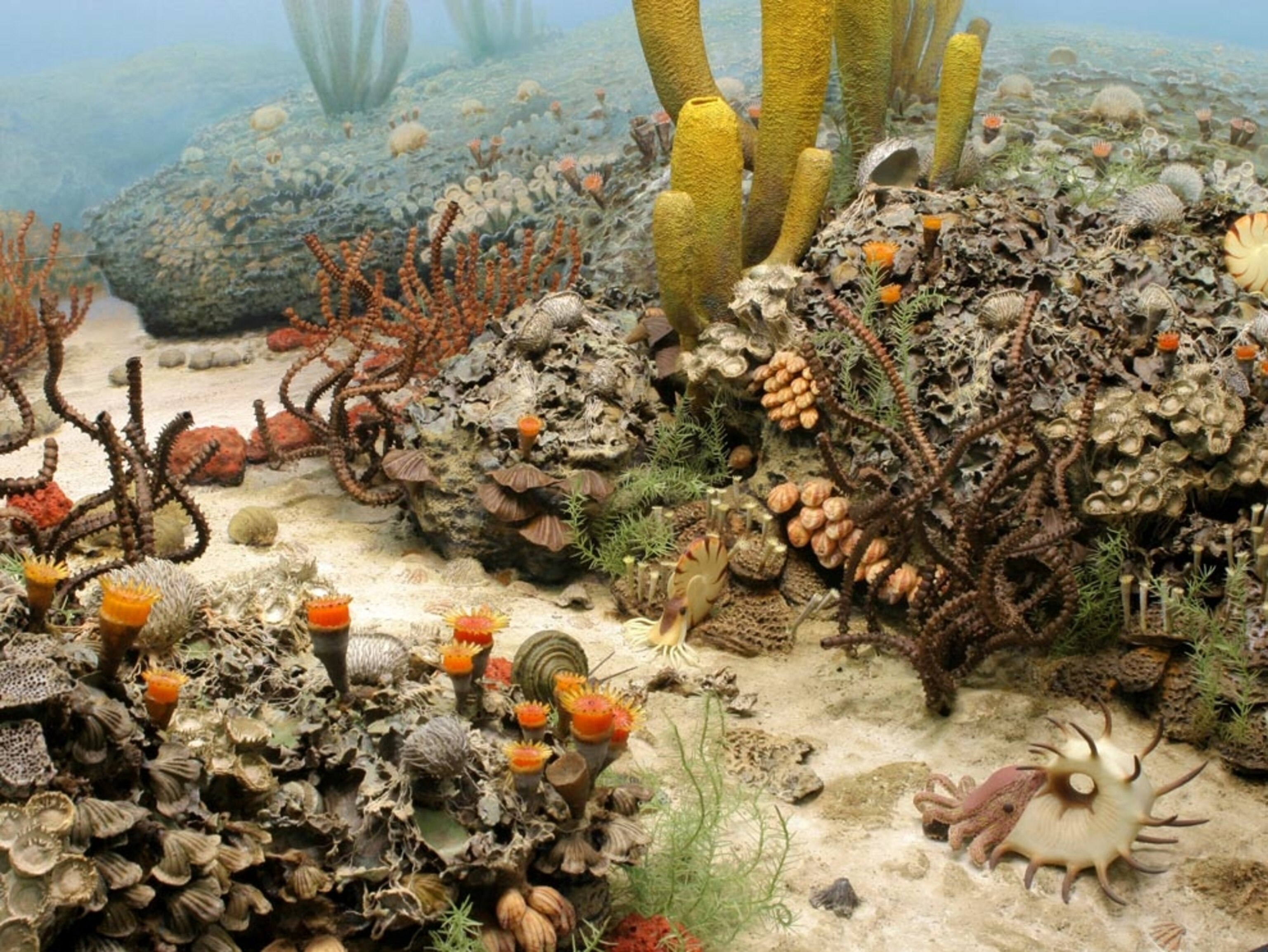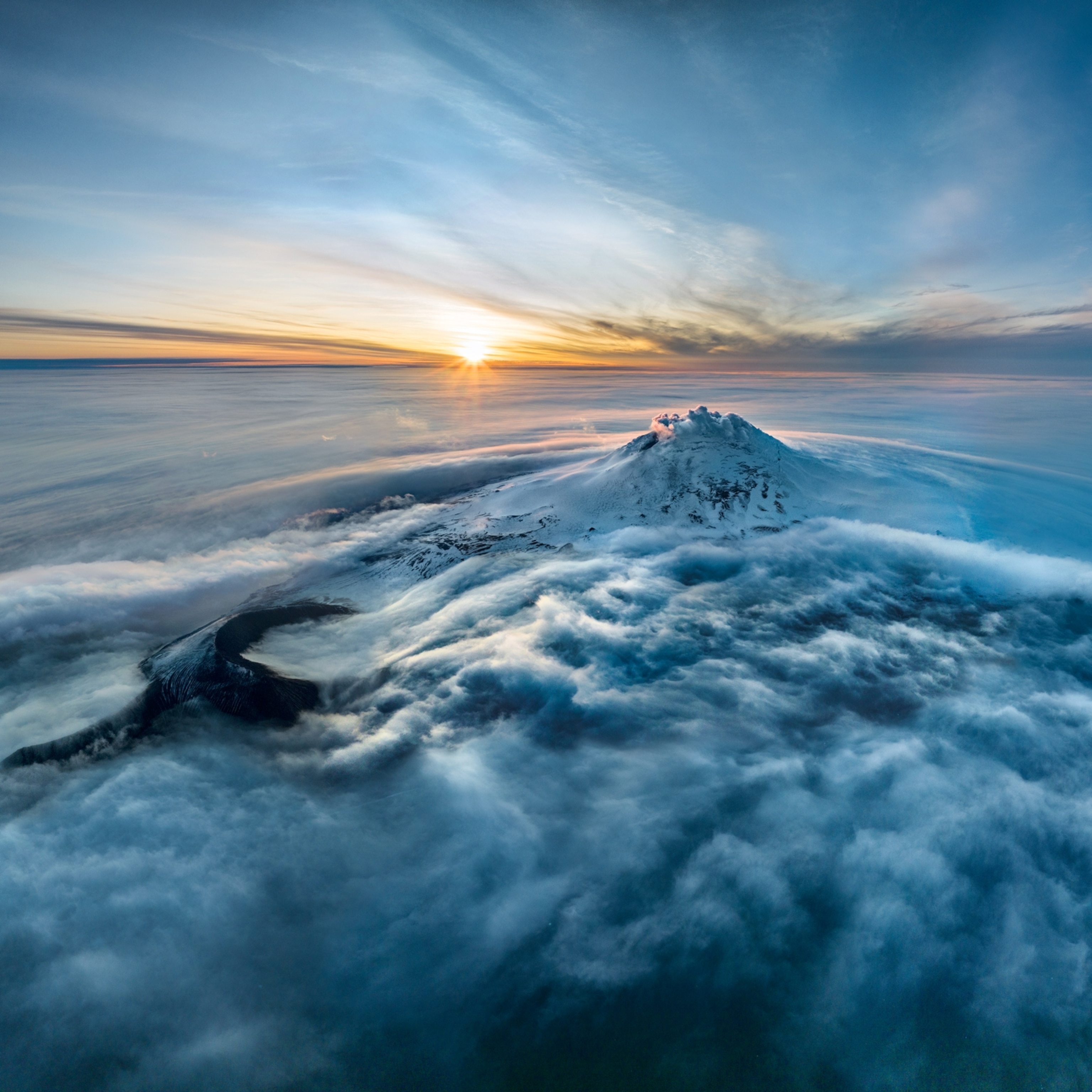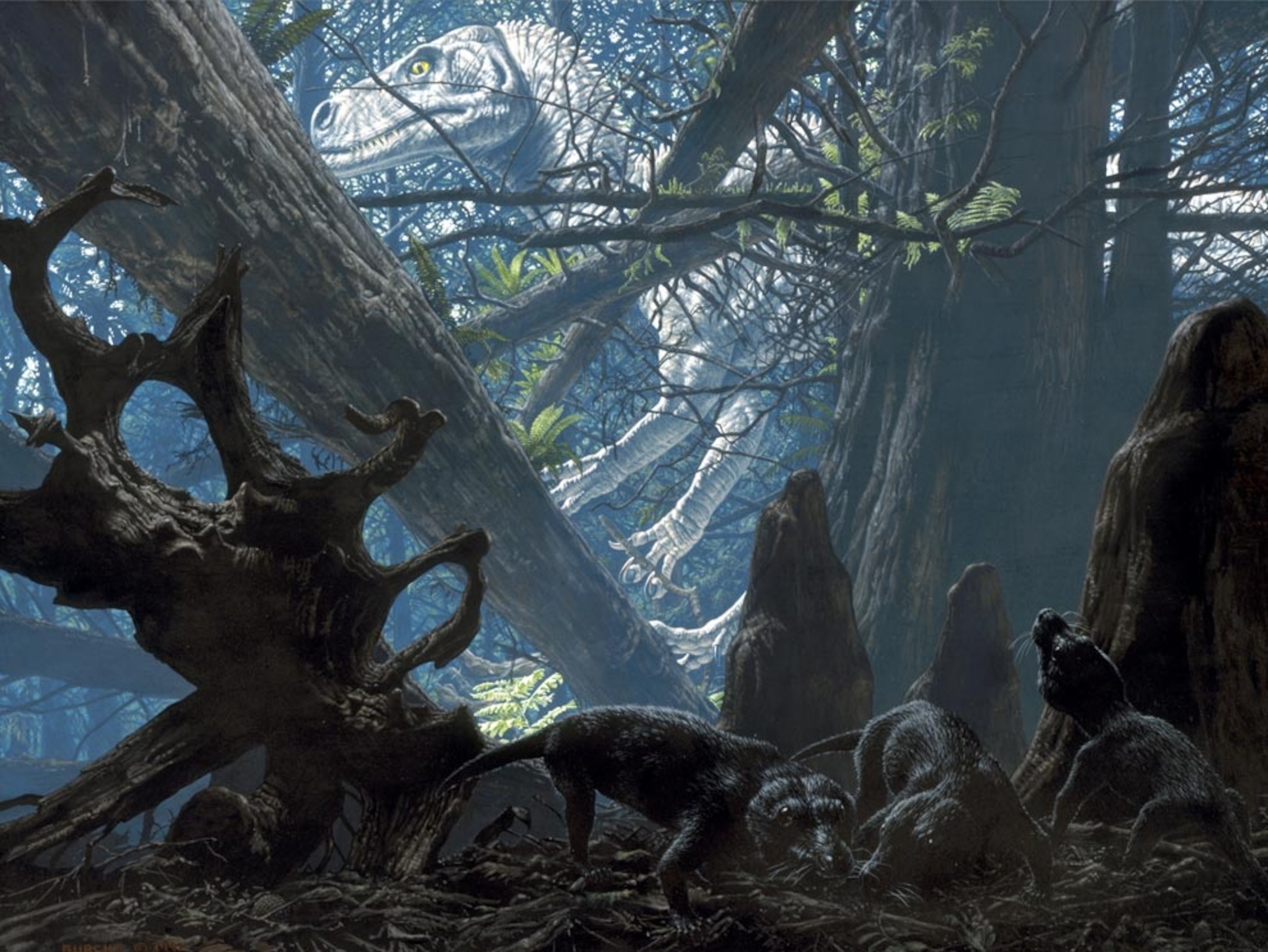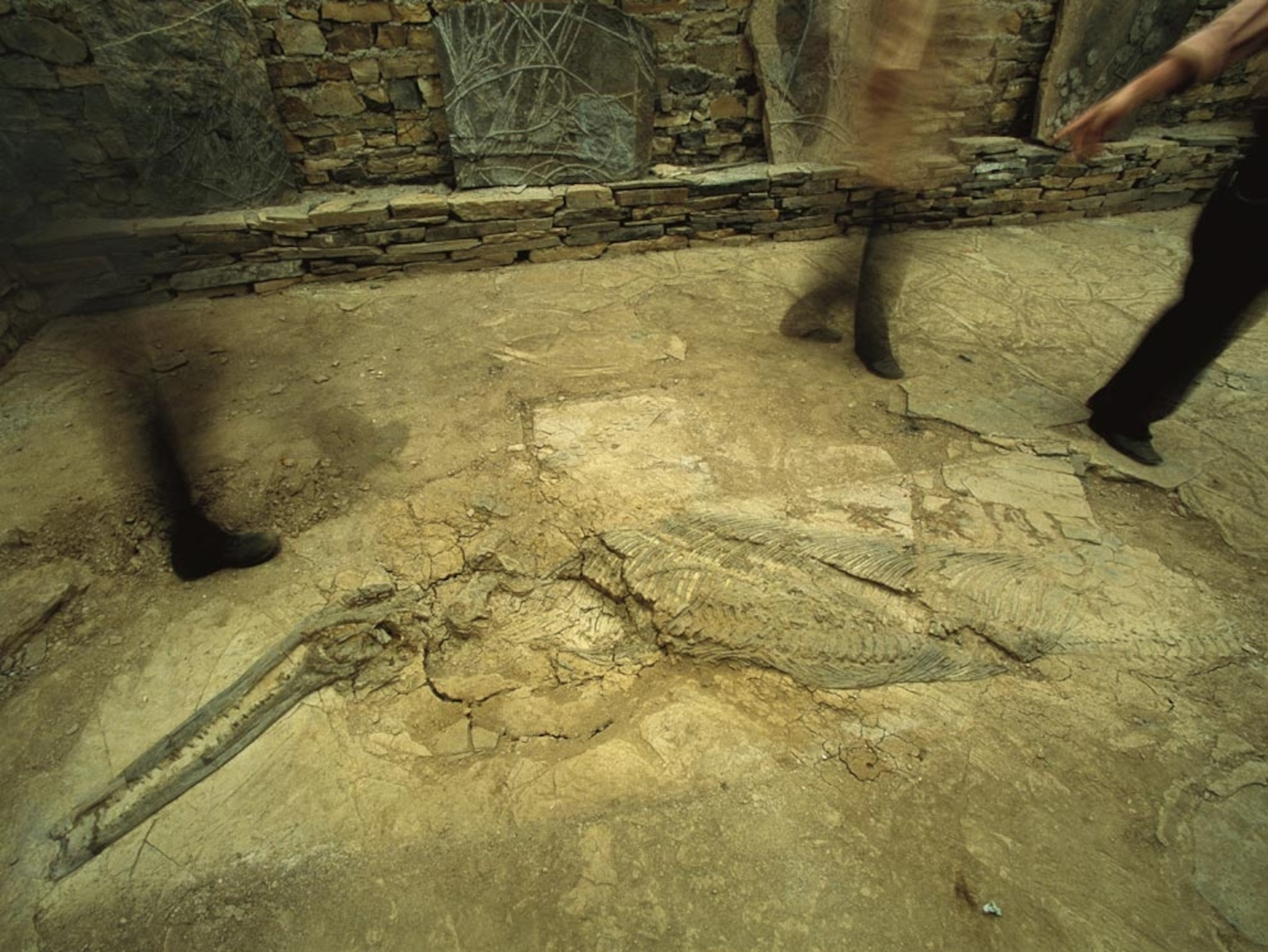More than 99 percent of all organisms that have ever lived on Earth are extinct. As new species evolve to fit ever changing ecological niches, older species fade away. But the rate of extinction is far from constant. At least a handful of times in the last 500 million years, 75 to more than 90 percent of all species on Earth have disappeared in a geological blink of an eye in catastrophes we call mass extinctions.
Though mass extinctions are deadly events, they open up the planet for new forms of life to emerge. The most studied mass extinction, which marked the boundary between the Cretaceous and Paleogene periods about 66 million years ago, killed off the nonavian dinosaurs and made room for mammals and birds to rapidly diversify and evolve.
Though the Cretaceous-Paleogene extinction is famous for being caused mainly by a huge asteroid, it’s the exception. The single biggest driver of mass extinctions appears to be major changes in Earth’s carbon cycle such as large igneous province eruptions, huge volcanoes that flooded hundreds of thousands of square miles with lava. These eruptions ejected massive amounts of heat-trapping gases such as carbon dioxide into the atmosphere, enabling runaway global warming and related effects such as ocean acidification and anoxia, a loss of dissolved oxygen in water.
Ordovician-Silurian extinction - 444 million years ago
The Ordovician period, from 485 to 444 million years ago, was a time of dramatic changes for life on Earth. Over a 30-million-year stretch, species diversity blossomed, but as the period ended, the first known mass extinction struck. At that time, massive glaciation locked up huge amounts of water in an ice cap that covered parts of a large south polar landmass. The icy onslaught may have been triggered by the rise of North America’s Appalachian Mountains. The large-scale weathering of these freshly uplifted rocks sucked carbon dioxide out of the atmosphere and drastically cooled the planet.
As a result, sea levels plummeted by hundreds of feet. Creatures living in shallow waters would have seen their habitats cool and shrink dramatically, dealing a major blow. Whatever life remained recovered haltingly in chemically hostile waters: Once sea levels started to rise again, marine oxygen levels fell, which in turn caused ocean waters to more readily hold onto dissolved toxic metals.
The second worst mass extinction known to science, this event killed an estimated 85 percent of all species. The event took its hardest toll on marine organisms such as corals, shelled brachiopods, eel-like creatures called conodonts, and the trilobites.
Late Devonian extinction - 383-359 million years ago
Starting 383 million years ago, this extinction event eliminated about 75 percent of all species on Earth over a span of roughly 20 million years.
In several pulses across the Devonian, ocean oxygen levels dropped precipitously, which dealt serious blows to conodonts and ancient shelled relatives of squid and octopuses called goniatites. The worst of these pulses, called the Kellwasser event, came about 372 million years ago. Rocks from the period in what’s now Germany show that as oxygen levels plummeted, many reef-building creatures died out, including a major group of sea sponges called the stromatoporoids.
It’s been hard to nail down the cause for the late Devonian extinction pulses, but volcanism is a possible trigger: Within a couple million years of the Kellwasser event, a large igneous province called the Viluy Traps erupted 240,000 cubic miles of lava in what is now Siberia. The eruption would have spewed greenhouse gases and sulfur dioxide, which can cause acid rain. Asteroids may also have contributed. Sweden’s 32-mile-wide Siljan crater, one of Earth’s biggest surviving impact craters, formed about 377 million years ago.
Though it may sound surprising, land plants may have been accessories to the crime. During the Devonian, plants hit on several winning adaptations, including the stem-strengthening compound lignin and a full-fledged vascular structure. These traits allowed plants to get bigger—and for their roots to get deeper—than ever before, which would have increased the rate of rock weathering.
The faster rocks weathered, the more excess nutrients flowed from land into the oceans. The influx would have triggered algae growth, and when these algae died, their decay removed oxygen from the oceans to form what are known as dead zones. In addition, the spread of trees would have sucked CO2 out of the atmosphere, potentially ushering in global cooling.
To add to the puzzle, not only did some creatures go extinct during the late Devonian, but species diversification slowed down during this time. The slowdown may have been caused by the global spread of invasive species, as high sea levels let creatures from previously isolated marine habitats mix and mingle, which let ecosystems around the world homogenize.
Permian-Triassic extinction - 252 million years ago
Some 252 million years ago, life on Earth faced the “Great Dying”: the Permian-Triassic extinction. The cataclysm was the single worst event life on Earth has ever experienced. Over about 60,000 years, 96 percent of all marine species and about three of every four species on land died out. The world’s forests were wiped out and didn’t come back in force until about 10 million years later. Of the five mass extinctions, the Permian-Triassic is the only one that wiped out large numbers of insect species. Marine ecosystems took four to eight million years to recover. (Find out more about the devastation of the Permian-Triassic mass extinction.)
The extinction’s single biggest cause is the Siberian Traps, an immense volcanic complex that erupted more than 720,000 cubic miles of lava across what is now Siberia. The eruption triggered the release of at least 14.5 trillion tons of carbon, more than 2.5 times what’d be unleashed if every last ounce of fossil fuel on Earth were dug up and burned. Adding insult to injury, magma from the Siberian Traps infiltrated coal basins on its way toward the surface, probably releasing even more greenhouse gases such as methane.
The resulting global warming was downright hellish. In the million years after the event, seawater and soil temperatures rose between 25 to 34 degrees Fahrenheit. By 250.5 million years ago, sea surface temperatures at the Equator got as high as 104 degrees Fahrenheit, a hot tub's standard maximum temperature. At the time, almost no fish lived near the Equator.
As temperatures rose, rocks on land weathered more rapidly, hastened by acid rain that formed from volcanic sulfur. Just as in the late Devonian, increased weathering would have brought on anoxia that suffocated the oceans. Climate models suggest that at the time, the oceans lost an estimated 76 percent of their oxygen inventory. These models also suggest that the warming and oxygen loss account for most of the extinction’s species losses.
Triassic-Jurassic extinction - 201 million years ago
Life took a long time to recover from the Great Dying, but once it did, it diversified rapidly. Different reef-building creatures began to take hold, and lush vegetation covered the land, setting the stage for a group of reptiles called the archosaurs: the forerunners of birds, crocodilians, pterosaurs, and the nonavian dinosaurs. But about 201 million years ago, life endured another major blow: the sudden loss of up to 80 percent of all land and marine species.
At the end of the Triassic, Earth warmed an average of between 5 and 11 degrees Fahrenheit, driven by a quadrupling of atmospheric CO2 levels. This was probably triggered by huge amounts of greenhouse gases from the Central Atlantic Magmatic Province, a large igneous province in central Pangaea, the supercontinent at the time. Remnants of those ancient lava flows are now split across eastern South America, eastern North America, and West Africa. The Central Atlantic Magmatic Province was enormous. Its lava volume could cover the continental U.S. in a quarter-mile of rock.
The uptick in CO2 acidified the Triassic oceans, making it more difficult for marine creatures to build their shells from calcium carbonate. On land, the dominant vertebrates had been the crocodilians, which were bigger and far more diverse than they are today. Many of them died out. In their wake, the earliest dinosaurs—small, nimble creatures on the ecological periphery—rapidly diversified.
Cretaceous-Paleogene extinction - 66 million years ago
The Cretaceous-Paleogene extinction event is the most recent mass extinction and the only one definitively connected to a major asteroid impact. Some 76 percent of all species on the planet, including all nonavian dinosaurs, went extinct.
One day about 66 million years ago, an asteroid roughly 7.5 miles across slammed into the waters off of what is now Mexico’s Yucatán Peninsula at 45,000 miles an hour. The massive impact—which left a crater more than 120 miles wide—flung huge volumes of dust, debris, and sulfur into the atmosphere, bringing on severe global cooling. Wildfires ignited any land within 900 miles of the impact, and a huge tsunami rippled outward from the impact. Overnight, the ecosystems that supported nonavian dinosaurs began to collapse. (Learn more about the last day of the dinosaurs’ reign.)
Global warming fueled by volcanic eruptions at the Deccan Flats in India may have aggravated the event. Some scientists even argue that some of the Deccan Flats eruptions could have been triggered by the impact.
Extinction today
Earth is currently experiencing a biodiversity crisis. Recent estimates suggest that extinction threatens up to a million species of plants and animals, in large part because of human activities such as deforestation, hunting, and overfishing. Other serious threats include the spread of invasive species and diseases from human trade, as well as pollution and human-caused climate change. (Explore National Geographic magazine's special issue on extinction.)
Today, extinctions are occurring hundreds of times faster than they would naturally. If all species currently designated as critically endangered, endangered, or vulnerable go extinct in the next century, and if that rate of extinction continues without slowing down, we could approach the level of a mass extinction in as soon as 240 to 540 years.
Climate change presents a long-term threat. Humans’ burning of fossil fuels has let us chemically imitate large igneous provinces, through the injection of billions of tons of carbon dioxide and other gases into Earth’s atmosphere each year. By total volume, these past volcanoes emitted far more than humans do today; the Siberian Traps released more than 1,400 times the CO2 than humans did in 2018 from burning fossil fuels for energy. However, humans are emitting greenhouse gases as fast as—or even faster than—the Siberian Traps, and Earth’s climate is rapidly changing as a result.
As mass extinctions show us, sudden climate change can be profoundly disruptive. And while we haven’t yet crossed the 75-percent threshold of a mass extinction, that doesn’t mean things are fine. Well before hitting that grim marker, the damage would throw the ecosystems we call home into chaos, jeopardizing species around the world—including us.
You May Also Like
Go Further
Animals
- How can we protect grizzlies from their biggest threat—trains?How can we protect grizzlies from their biggest threat—trains?
- This ‘saber-toothed’ salmon wasn’t quite what we thoughtThis ‘saber-toothed’ salmon wasn’t quite what we thought
- Why this rhino-zebra friendship makes perfect senseWhy this rhino-zebra friendship makes perfect sense
- When did bioluminescence evolve? It’s older than we thought.When did bioluminescence evolve? It’s older than we thought.
- Soy, skim … spider. Are any of these technically milk?Soy, skim … spider. Are any of these technically milk?
Environment
- Are the Great Lakes the key to solving America’s emissions conundrum?Are the Great Lakes the key to solving America’s emissions conundrum?
- The world’s historic sites face climate change. Can Petra lead the way?The world’s historic sites face climate change. Can Petra lead the way?
- This pristine piece of the Amazon shows nature’s resilienceThis pristine piece of the Amazon shows nature’s resilience
- Listen to 30 years of climate change transformed into haunting musicListen to 30 years of climate change transformed into haunting music
History & Culture
- Meet the original members of the tortured poets departmentMeet the original members of the tortured poets department
- Séances at the White House? Why these first ladies turned to the occultSéances at the White House? Why these first ladies turned to the occult
- Gambling is everywhere now. When is that a problem?Gambling is everywhere now. When is that a problem?
- Beauty is pain—at least it was in 17th-century SpainBeauty is pain—at least it was in 17th-century Spain
Science
- Here's how astronomers found one of the rarest phenomenons in spaceHere's how astronomers found one of the rarest phenomenons in space
- Not an extrovert or introvert? There’s a word for that.Not an extrovert or introvert? There’s a word for that.
- NASA has a plan to clean up space junk—but is going green enough?NASA has a plan to clean up space junk—but is going green enough?
- Soy, skim … spider. Are any of these technically milk?Soy, skim … spider. Are any of these technically milk?
Travel
- How to see Mexico's Baja California beyond the beachesHow to see Mexico's Baja California beyond the beaches
- Could Mexico's Chepe Express be the ultimate slow rail adventure?Could Mexico's Chepe Express be the ultimate slow rail adventure?

